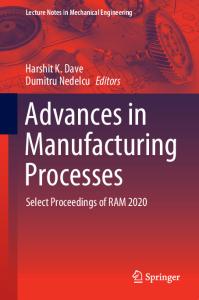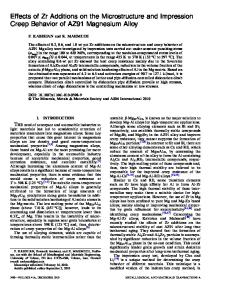Nd:YAG Laser Welding of AZ91 Magnesium Alloy for Aerospace Industries
- PDF / 694,922 Bytes
- 8 Pages / 593.972 x 792 pts Page_size
- 84 Downloads / 376 Views
INTRODUCTION
MAGNESIUM alloys have different interesting specific characteristics including the best strength-to-weight ratio among all commercial alloys. These materials classes have both a high thermal conductivity and a high damping capacity. These materials properties improve the heat transfer during the welding process and have a good impact resistance. Moreover, magnesium alloys have a low density and are completely recyclable.[1] Metal alloys and polymers are already being used to reduce weight significantly, but remarkable reductions could be achieved by using a low-density material. As the lightest structural material available so far, magnesium alloys have the potential to replace steel and aluminum in many structural applications. Magnesium is an attractive material to use, primarily because of its light weight: 36 pct lighter per unit volume than Al and 78 pct lighter than iron. Also, alloyed magnesium has the highest strength-to-weight ratio of all structural metals. Thus, magnesium alloys have already found considerable applications in aerospace, aircraft, automotive, electronics, and other fields, especially magnesium die castings in the automotive industry.[2] The use of magnesium in automotive applications is growing, although the cost and quantities available are not ideal. The average magnesium content in model cars KAMEL ABDERRAZAK is with the Unit of Heat transfer and Thermodynamic of Industrials Proceeding, National Engineering School of Monastir, 5019 Monastir, Tunisia, and Mechanical Institute of Marseille, Technopoˆle de Chaˆteau-Gombert, 13453 Marseille cedex 13, France. Contact e-mail: [email protected] WACEF BEN SALEM is with the Engineering Mechanical Laboratory, National Engineering School of Monastir, 5019 Monastir, Tunisia. HATEM MHIRI is with the Unit of Heat transfer and Thermodynamic of Industrials Proceeding, National Engineering School of Monastir. PHILIPPE BOURNOT and MICHEL AUTRIC are with the Mechanical Institute of Marseille, Technopoˆle de Chaˆteau-Gombert. Manuscript submitted February 20, 2008. Article published online January 21, 2009. 54—VOLUME 40B, FEBRUARY 2009
was reported from 3.8 to 4 kg since 2002.[3] In the main, this increase is due to the use of magnesium in many parts of the automobile such as the steering wheel armatures, steering column jackets, and steering column/pedal bracket supports. Even in the aerospace industry magnesium and its alloys are used, such as in gearbox casings, oil sumps, helicopter turbines, aircraft wheels, and seat structures.[3] The wider application of magnesium alloys needs reliable welding processes. That is why welding of magnesium has become an attractive subject for researchers and manufacturers. However, low welding speeds, large heat-affected zones (HAZ) and fusion zones (FZs), high shrinkages, variations in microstructures and properties, evaporative loss of alloying elements, high residual stress, and distortion joints have caused attention to be drawn toward laser welding due to its numerous advantages such as a narrow
Data Loading...











